Immersive Virtual Reality Market Size
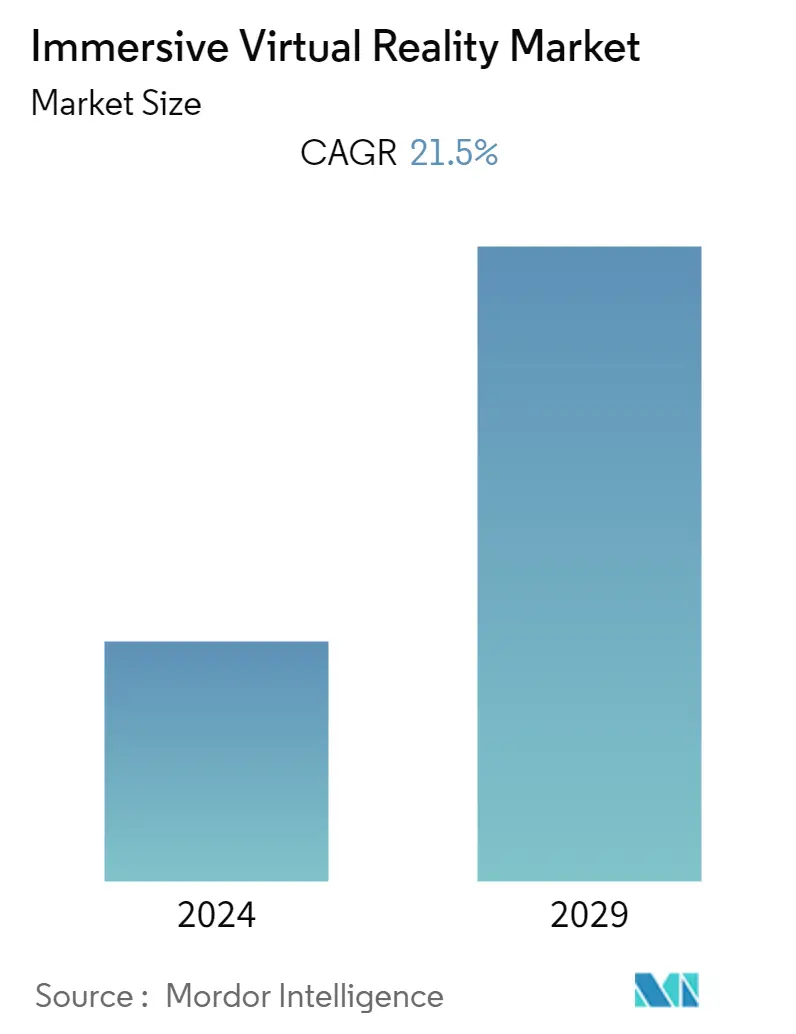
| Study Period | 2019 - 2029 |
| Base Year For Estimation | 2023 |
| CAGR | 21.50 % |
| Fastest Growing Market | Asia-Pacific |
| Largest Market | North America |
| Market Concentration | Low |
Major Players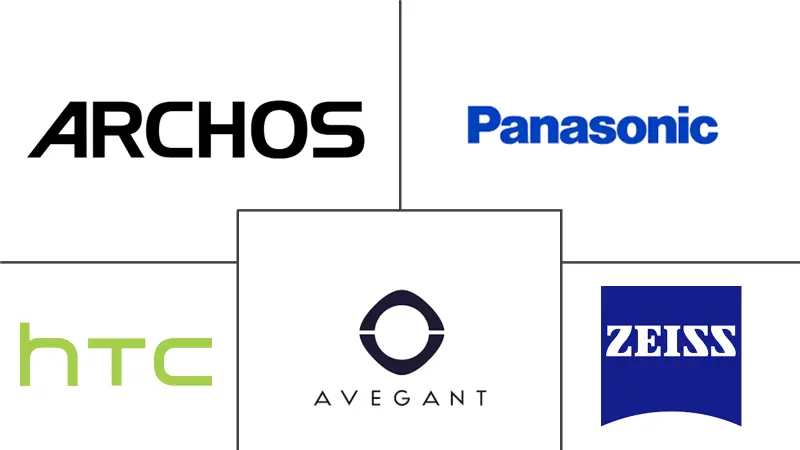
*Disclaimer: Major Players sorted in no particular order |
Immersive Virtual Reality Market Analysis
Immersive virtual reality market has registered a CAGR of 21.5% over the forecast period. The use of computer technology to simulate an environment is known as immersive virtual reality. Unlike the traditional user interface, VR places the user inside an experience. Instead of viewing a monitor screen in front of them, users are immersed and can interact with the 3D world. Technology has transformed the world by simulating as many senses as possible, such as vision, touch, hearing, and even smell.
- The implementation of immersive virtual reality is expected to be the future of the education industry. Virtual reality enables the risk-free practice of events that occur in the real world. VR has been instrumental in reducing the cost and risks associated with training, and thus, it has led to the adoption of technology across different industries.
- Cloud technologies are also promising scalability to immersive VR vendors. As VR-generated data increases, cloud services will store apps, data, and memory on virtual servers and stream them on demand. This is also expected to drive innovation in immersive VR and service updates in an uninterrupted cycle.
- Moreover, VR has also influenced the healthcare sector because it helped create a virtual environment for the surgeon. Real-time training involves expensive tools and equipment or hazardous conditions. The adoption of such technology is expected to expand horizons for the healthcare industry as a whole, which in turn will boost the market.
- But virtual reality devices are more expensive, which is stopping the market from growing during the time frame that was predicted.
- The COVID-19 crisis impacted several immersive VR tech companies. VR gaming centers were closed due to stay-at-home orders during the initial months of the pandemic. On the contrary, the consumer VR market witnessed a significant increase in adoption. During the lockdown, most people invested in immersive VR gaming as they aimed to explore new frontiers in gaming technology.
Immersive Virtual Reality Market Trends
This section covers the major market trends shaping the Immersive Virtual Reality Market according to our research experts:
Head Mounted Displays is Expected to Have Significant Share
- A head-mounted display is a secondary display that can be easily worn on the head by the user to get live video from the primary thermal sight. HMDs are designed specifically for situations where the user requires hands-free situational awareness. Head-mounted displays designed for virtual reality are typically larger than their AR or MR headsets. HMD can be installed on an outdoor helmet or worn on the head with a head strap.
- Further, the demand for virtual reality plays a vital role in enhancing the user's gaming experience. Thus, the HMD market is driven by the high demand for VR HMDs in applications such as PC games, consoles, and smartphones. The market is also driven by the key vendors putting out more products and software that work together.
- HMDs are not only used in virtual reality gaming; they've also been utilized in military, medical, and engineering contexts, among various others. For example, Vuzix, a smart glasses and augmented reality technology company, announced a partnership with L3 Harris Technologies to make a waveguide-based optics engine for military head-mounted systems.
- Immersive technologies are becoming widely popular, and 360-degree videos are a raging emerging trend in the current market scenario. Three hundred sixty-degree videos give users a full panoramic view of the video. Viewers can further click manually through the video and directly interact with different aspects of the stream instead of just watching it. 360-degree content allows viewers to wear a VR headset and look around a 360-degree video in all directions to get a real-life experience. This market study is anticipated to expand exponentially over the forecast period.
- Moreover, the entertainment field is currently making the best possible use of immersive virtual reality's HMD. With increasing innovation, research, and development, it has the potential to thrive in the entertainment industry for many more years to come.
- For instance, in February last year, Sony unveiled its new virtual reality (VR) headset for the smash-hit game console PlayStation 5. The headset includes vibrating feedback with eye-tracking and a 110-degree field of view with a 4K HDR resolution of 2000x2040 per eye using an OLED screen with a frame rate of 90/120 Hz. The headset also includes controllers, which provide haptic feedback for immersive gaming.
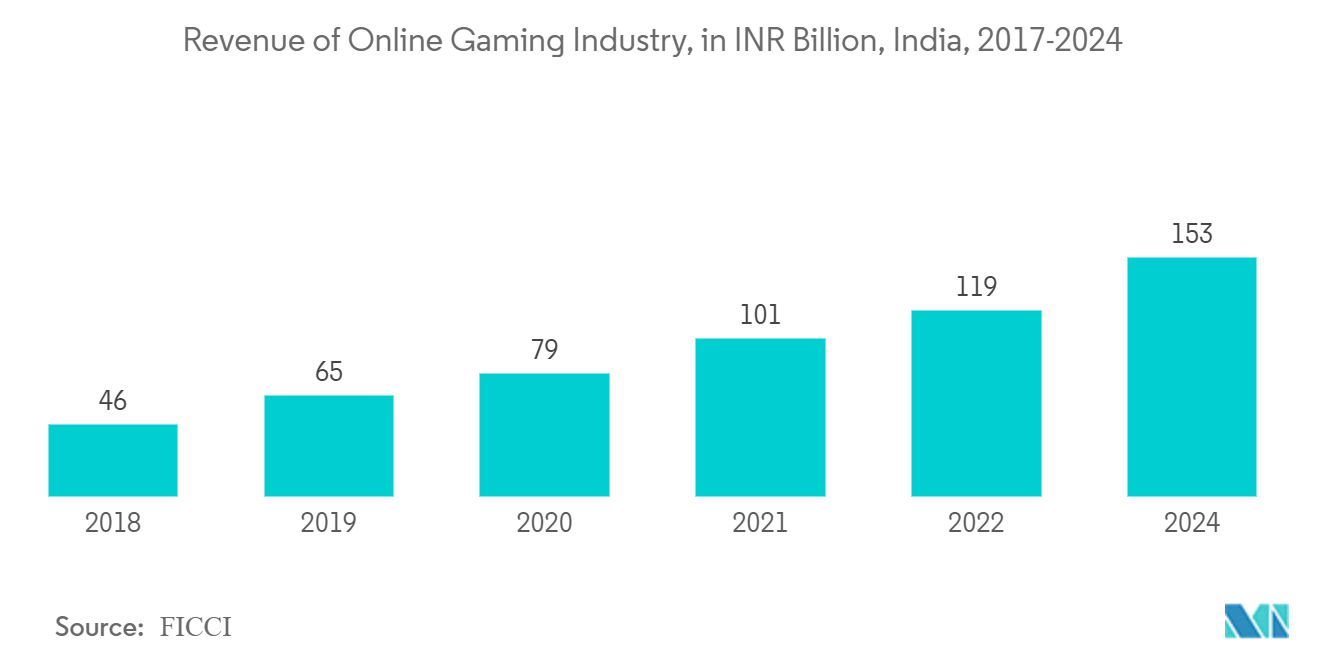
North America Occupies Major Share
- North America occupies the major share due to the presence of immersive virtual reality players and budding start-ups, which creates a huge opportunity for the market to grow. It has also been a pioneer in adopting innovations, which gives North America an edge over other regions.
- Moreover, there is an increasing potential for immersive VR technology to be used in defense, military, and law enforcement contexts. It helps provide training simulations that can be used to prepare personnel for various scenarios by simulating actual vehicles, soldiers, and combat environments. These technologies can also provide information and situational awareness in real-time, enhancing the ability of personnel to make quick and informed decisions.
- The United States has the highest military expenditure in the world. In the budget proposal for the current fiscal year, as released in March last year, the Biden administration sought USD 813.3 billion for national defense. Such investments in enhancing military types of equipment are boosting the demand for immersive VR in the region.
- Users can use virtual reality to bridge the gap between educators and students. Distance learning systems that use virtual reality can bring educators and students together in the same room with digital representations of themselves. In April last year, VictoryXR, a provider of augmented and virtual reality (AR/VR) content for schools and educational institutions, announced ten "Metaversities" would be launching in the United States, with several educational institutions planning to roll out digital twin campuses in order to provide learning options for students in the metaverse. In addition, each student will receive a Quest 2 VR headset for use during their course.
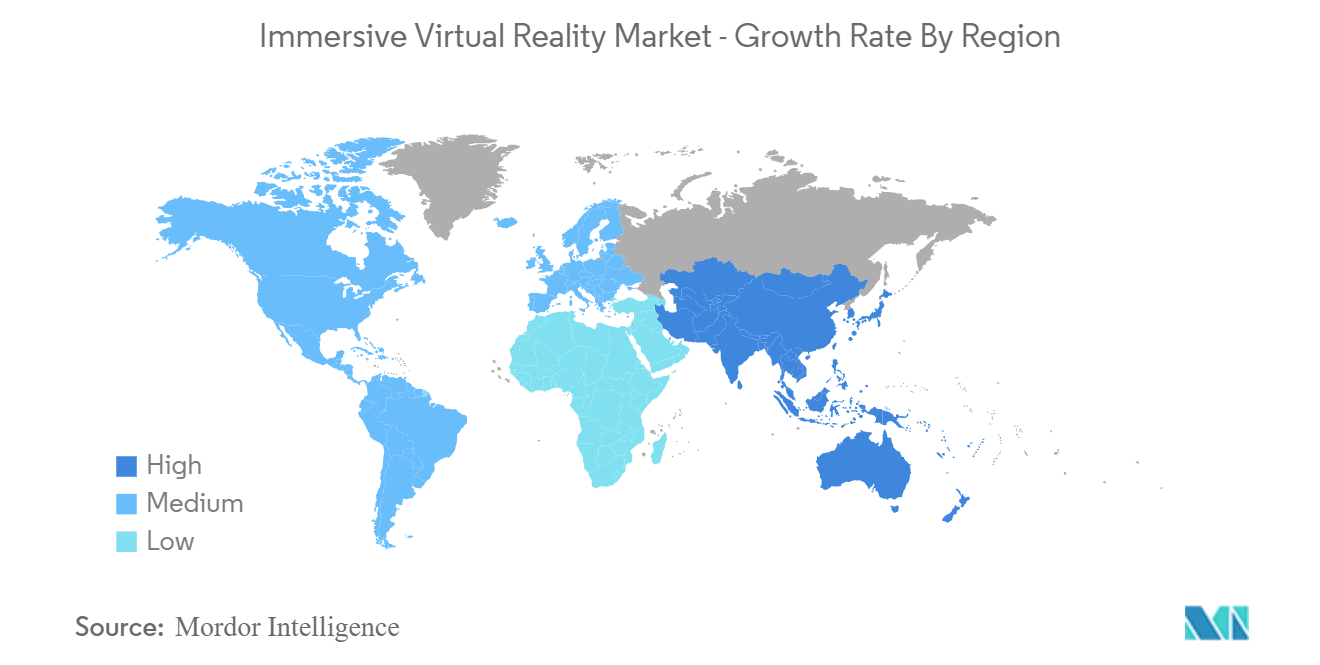
Immersive Virtual Reality Industry Overview
The immersive virtual reality market is moderately competitive in nature. Furthermore, research and development initiatives aimed at improving immersive virtual environments' quality, performance, and effectiveness are projected to propel market demand in the years to come, increasing the competition among the key vendors. Some of the key vendors are EON Reality, Carl Zeiss AG, Archos, Sony Corporation, etc. Some recent developments are:
In October 2022, Microsoft announced its partnership with Meta to bring its most popular productivity and collaboration apps to the new Quest Pro VR headset. While wearing the Quest 2 and Quest Pro headsets, users will be able to access their Windows 365 apps within Meta's VR "workrooms." They'll also be able to participate in Microsoft Teams meetings in VR.
In May 2022, PrecisionOS announced its partnership with Siemens Healthineers to offer immersive virtual reality (VR) training. The module helps surgeons and technicians practice using Siemens Healthineers' mobile 3D C-arm Cios Spin for intraoperative quality control and surgical workflow guidance. Multi-user, peer-to-peer training sessions would let surgeons and technicians share their knowledge of surgical procedures on a virtual patient. This would make it easier for them to work together.
Immersive Virtual Reality Market Leaders
-
Archos
-
Carl Zeiss AG
-
Sony Corporation
-
EON Reality
-
Oculus ( Facebook, Inc.)
*Disclaimer: Major Players sorted in no particular order
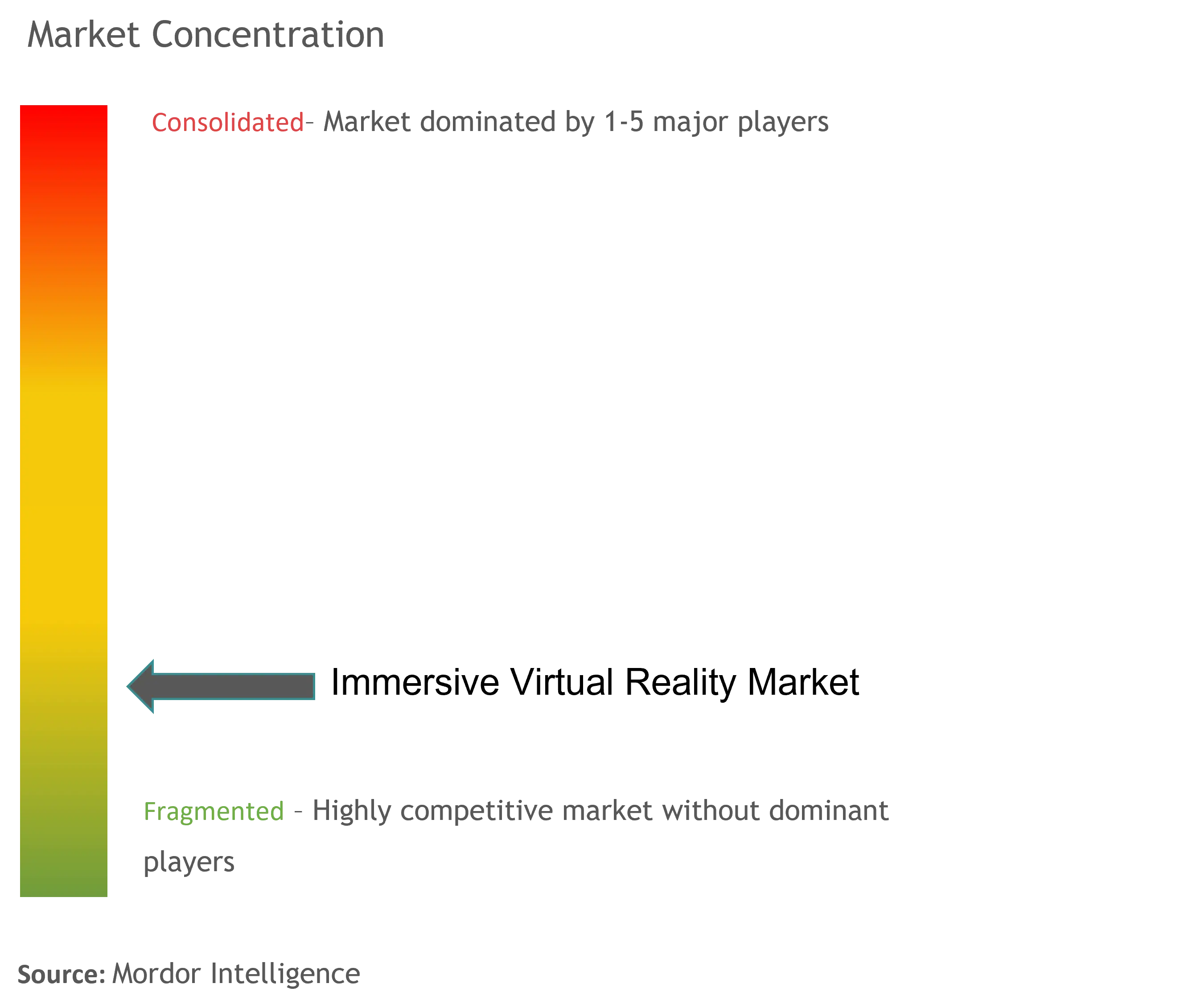
Immersive Virtual Reality Market News
- October 2022: PokerStars VR, part of Flutter Entertainment, has announced that it will be a launch title for Meta's Quest Pro mixed reality headset. Players using Quest Pro would be able to adapt their surroundings to suit their playing habits. It would offer options including a fully immersive virtual reality experience and a partial immersion that brings objects or spaces from their physical world into the game through editable "passthrough windows."
- August 2022: A new Oculus Quest and VR experience called "Artemis Ascending" would provide an immersive view of the launch pad when NASA's historic Artemis 1 mission lifts off for the moon.
Immersive Virtual Reality Market Report - Table of Contents
1. INTRODUCTION
- 1.1 Study Deliverables
- 1.2 Study Assumptions
- 1.3 Scope of the Study
2. RESEARCH METHODOLOGY
3. EXECUTIVE SUMMARY
4. MARKET DYNAMICS
- 4.1 Market Overview
- 4.2 Introduction to Market Drivers and Restraints
-
4.3 Market Drivers
- 4.3.1 Use of Virtual Reality in Aerospace & Defense for Training and Simulation
- 4.3.2 Penetration of HMDs in Gaming and Entertainment Sector
-
4.4 Market Restraints
- 4.4.1 High Product Cost
- 4.5 Industry Value Chain Analysis
-
4.6 Industry Attractiveness - Porter's Five Forces Analysis
- 4.6.1 Threat of New Entrants
- 4.6.2 Bargaining Power of Buyers/Consumers
- 4.6.3 Bargaining Power of Suppliers
- 4.6.4 Threat of Substitute Products
- 4.6.5 Intensity of Competitive Rivalry
5. MARKET SEGMENTATION
-
5.1 By Device
- 5.1.1 Gesture Tracking Devices
- 5.1.2 Head Mounted Displays
-
5.2 By End-user Industry
- 5.2.1 Entertainment & Gaming
- 5.2.2 Aerospace & Defense
- 5.2.3 Healthcare
- 5.2.4 Education
- 5.2.5 Other End-user Industries
-
5.3 Geography
- 5.3.1 North America
- 5.3.2 Europe
- 5.3.3 Asia-Pacific
- 5.3.4 Rest of World
6. COMPETITIVE LANDSCAPE
-
6.1 Company Profiles
- 6.1.1 Carl Zeiss AG
- 6.1.2 Avegant Corporation
- 6.1.3 HTC Corporation
- 6.1.4 Archos
- 6.1.5 Panasonic Corporation
- 6.1.6 Magic Leap
- 6.1.7 Sony Corporation
- 6.1.8 Samsung Electronics Co., Ltd.
- 6.1.9 Google LLC
- 6.1.10 Microsoft Corporation
- 6.1.11 Oculus ( Facebook, Inc.)
- 6.1.12 Eon Reality
- 6.1.13 CyberGlove Systems
- 6.1.14 Leap Motion (Ultrahaptics)
- 6.1.15 Sixense Enterprises Inc.
- *List Not Exhaustive
7. MARKET OPPORTUNITIES AND FUTURE TRENDS
8. INVESTMENT ANALYSIS
** Subject To AvailablityImmersive Virtual Reality Industry Segmentation
Immersive virtual reality involves the creation of simulated environments that imitate real objects or people to create an illusion. The creation of such an illusion helps people understand the actual environments of an industry, arena, space, or situation.Immersive virtual reality has applications across a wide array of industries, such as gaming and entertainment, defense, and healthcare, which are projected to bring in key revenues to the global market. The VR market for software includes apps, platforms, and content providers in the VR space.
The market sizes and forecasts are provided in terms of value (USD million) for all the above segments.
| By Device | Gesture Tracking Devices |
| Head Mounted Displays | |
| By End-user Industry | Entertainment & Gaming |
| Aerospace & Defense | |
| Healthcare | |
| Education | |
| Other End-user Industries | |
| Geography | North America |
| Europe | |
| Asia-Pacific | |
| Rest of World |
Immersive Virtual Reality Market Research FAQs
What is the current Immersive Virtual Reality Market size?
The Immersive Virtual Reality Market is projected to register a CAGR of 21.5% during the forecast period (2024-2029)
Who are the key players in Immersive Virtual Reality Market?
Archos, Carl Zeiss AG, Sony Corporation, EON Reality and Oculus ( Facebook, Inc.) are the major companies operating in the Immersive Virtual Reality Market.
Which is the fastest growing region in Immersive Virtual Reality Market?
Asia-Pacific is estimated to grow at the highest CAGR over the forecast period (2024-2029).
Which region has the biggest share in Immersive Virtual Reality Market?
In 2024, the North America accounts for the largest market share in Immersive Virtual Reality Market.
What years does this Immersive Virtual Reality Market cover?
The report covers the Immersive Virtual Reality Market historical market size for years: 2019, 2020, 2021, 2022 and 2023. The report also forecasts the Immersive Virtual Reality Market size for years: 2024, 2025, 2026, 2027, 2028 and 2029.
Immersive Virtual Reality Industry Report
Statistics for the 2023 Immersive Virtual Reality market share, size and revenue growth rate, created by Mordor Intelligence™ Industry Reports. Immersive Virtual Reality analysis includes a market forecast outlook to 2029 and historical overview. Get a sample of this industry analysis as a free report PDF download.



